Kate Miller Wilson is an unbelievably talented large-format photographer, often capturing her family and daily life on black and white film. She was a major inspiration in my decision to dive into the world of sheet film and is probably the only person I know who would describe 4×5 as “convenient and inexpensive.”
WIlson is an absolute gem and if you’re not convinced to give large format a go after this interview, then I suggest getting your eyes checked. When they are, you can see more of her work on Instagram at @KateMillerWilson.
Can you start out by giving us a little introduction to yourself?
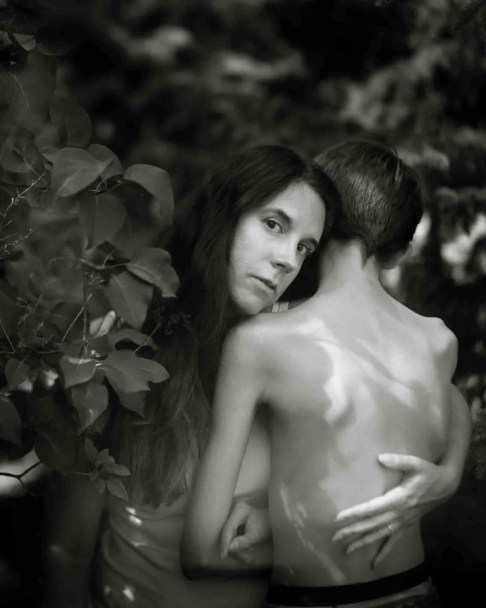
I have been shooting for about seven years. I started with digital. I was completely obsessed with learning and digital is a good way to learn because you’re not wasting any film yet. After a couple of years, I really got into film and learned to develop. I started with medium format and I did that for a little while before I got into large format and now that’s mostly what I shoot. I shoot 8×10 and 4×5, but mostly 4×5 because it’s convenient, inexpensive, and it’s easy and fun!
You started with digital, but what was it that pushed you into film photography?
I mostly photograph my kids (although I’m trying to branch out from that more) and I loved looking at other photographers’ photos of their own kids. Obviously there’s Sally Mann who is just amazing. She was really the kind of person I wanted to be like in the beginning. I knew she was shooting film and wet plate, so I had to learn those skills in order to get to that level.
I loved everything I saw that was large format. I started following people online and looked up images, and I was always going for that goal of eventually being able to shoot large format. What I didn’t realize is that you (or myself at least) end up caring more about your film pictures than the digital ones. Because digital is just so easy to push the shutter button and take 200 or 300 photos a day. That was great for learning, but you don’t care about the photos the same way as if you were only taking two or six images.
I feel like there’s several different camps in the film world. There’s some people that shoot film because of the slow process and others because they like the look of it. It sounds like you’re more in the second group? Is that fair to say, or is it a little bit of both for you?
It’s probably both. Initially it was just the look. I didn’t yet understand that the process felt different. Later I learned that slowing down, looking through the ground glass, taking the time to set up the shot — in addition to making you love the shot more — is also really calming. And I’m a really anxious person. The mindfulness aspect helps me to shoot that way.
Your photos have a very unique look to them. It’s easy to tell when a photo is yours while scrolling through Instagram. How did you develop your style?
I remember when I got my camera I didn’t have a lens at first — I just looked at it and admired its beauty. Once I got a lens it was fun to see what I could do with it. I was just experimenting with moving it. I fell in love with the idea that you could get two different things in focus.
I love shallow depth of field in all formats. But then to be able to shoot at a shallow depth of field and still be able to offer context is great. If you’re shooting 35mm at f/1.4 you lose the background, it becomes this pretty blur. And that’s cool, but to be able to do this really shallow depth of field and still have something else in the background in focus. I just started messing around with that and it became what I wanted to do. I don’t always get two things. Sometimes there’s a little weird effect but that’s what I like about it.
I would say large format is a bit more difficult and intimidating. Have you experienced that?
I mean, there are a lot of ways to mess it up and many things you can do incorrectly. You can miss focus or mess up your exposure. But that’s true with any format or camera. I’ve wasted a fair number of sheets just by pulling the dark slide too soon. I think I mess up around one sheet for every 50 exposures.
That’s not a bad ratio!
I just accept it as part of shooting large format. Of course you’re going to make mistakes. But once you get the hang of it there are fewer of them. People have been shooting in large format for so long, and sometimes they’ll say it’s a lot harder than it is.
Mistakes are a natural part of the learning process. Even professionals make mistakes. What are some of the silliest mistakes that you’ve made?
I’m building a darkroom, but until it’s finished I’m doing my developing in one of my bathrooms. I develop 8×10 in trays because I don’t shoot a lot of it and I haven’t had good luck with anything else. In the bathroom the switches for the bench fan and the lights are next to each other. Once, I was tray developing and had forgotten to turn on the fan. I was worried I would poison myself so I quickly hit the switch. But it was to the lights and so all the film was immediately ruined.
Light leaks are always a possible mistake. It could be that the film holder isn’t seated correctly and if it isn’t, light can leak in easily. Of course, there’s plenty of potential for mistakes while developing, correct exposures can be missed too. Some of these mistakes you can fix, but when it comes to pulling the dark slide too soon that’s frustrating because you know you wasted the film.
I don’t want to sound privileged, but I feel like it’s okay to waste film. Of course it’s expensive, but experimentation is also part of the process and necessary for growth. And experimentation means you’re going to waste a lot of film. I did a series a couple years ago where I used static electricity to shock self portraits in the darkroom and I wasted about three quarters of the film through trial and error. But the results were cool! I think it’s good to have that attitude, knowing you’re going to waste some film and blow some shots. Nothing is too precious.
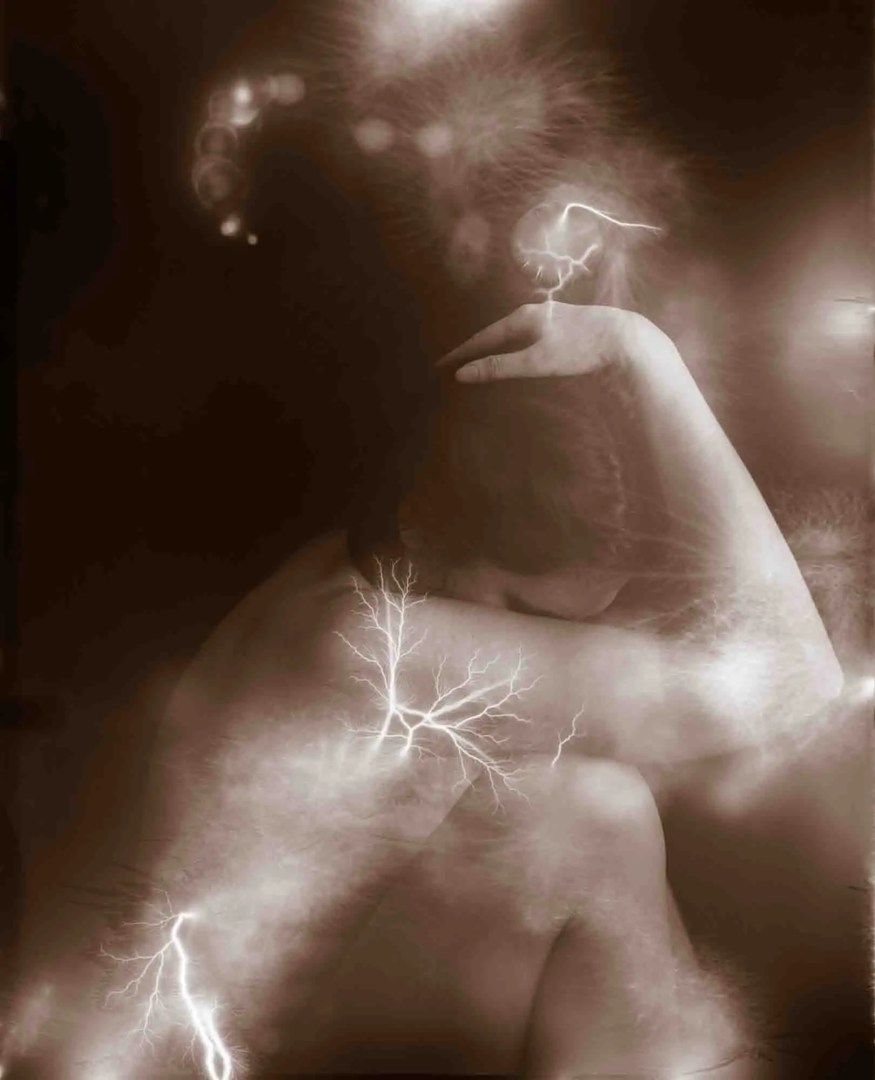
That sounds like a really interesting project. What effect did the static electricity create?
It started as a reaction to the anxiety I was feeling when the pandemic was first starting. I felt like I had to do something to take my mind off of it, and photography always does that. So I did a self portrait on Ilford Ortho film. Then I took it to the darkroom and shocked the negative with a crank generator that creates a static shock. It was weird but it created this all-consuming feeling. Throwing yourself into something when feeling anxious is something I love about a good photo project.
Did it give the film a lightning bolt pattern or effect?
Yeah! You can get different effects. If you just hit it in one spot, it’ll travel to the edges so then it’ll create like a lightning bolt. Or you can drag it and then it creates this sort of swirling vortex of light. Or if you get it wet then it creates a bunch of sparkles. Most of the time I couldn’t see where I was going to shock the negative, so I would accidentally blow away the image in the wrong spot. But I had a really good time doing it, even if it’s not something I would ever do in my normal photo work.
It’s kind of like doing double exposures, and trying to visualize how the two images will lay on each other.
That’s exactly what it is, — a double exposure with static. And large format is awesome for double exposures, but everything you’re looking at is upside down and backwards, so you’re always thinking, “Wait no, where was that?”
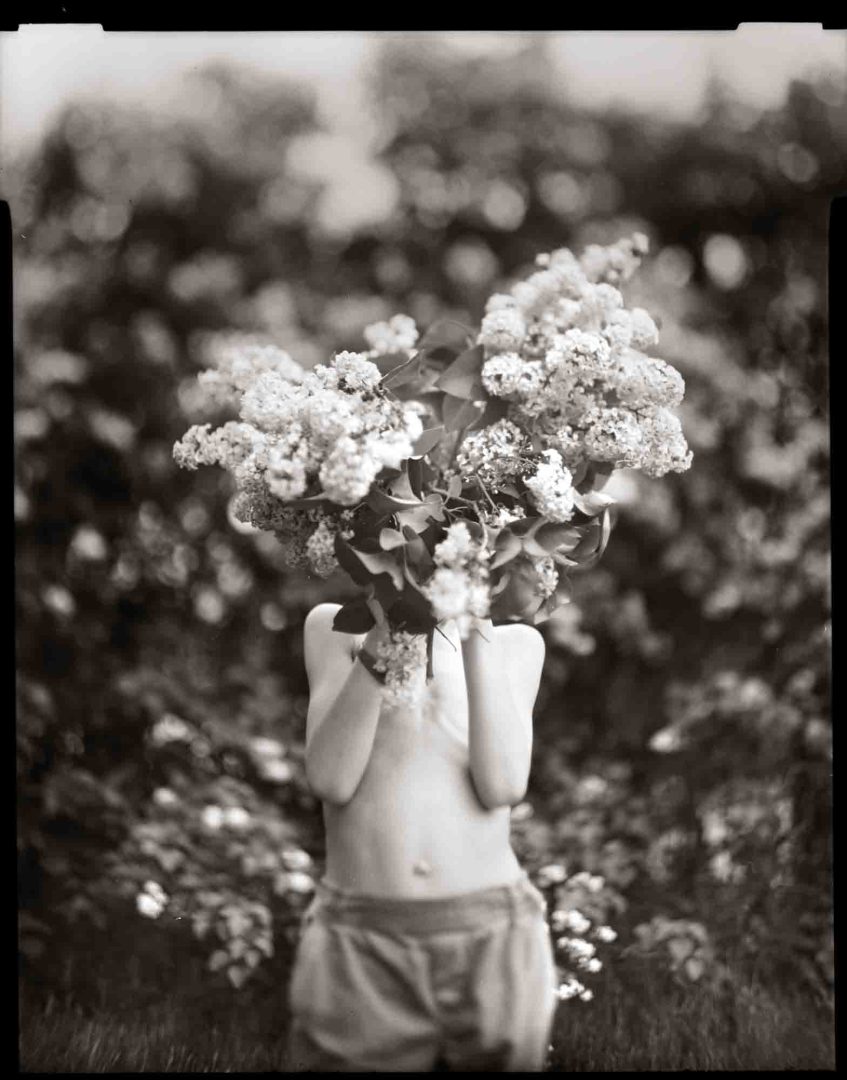
Can you talk a little bit about your experience with 8×10 photography?
I’ve been shooting 8×10 for about a year. And I really like it, but it’s different. Probably no one else would call 4×5 convenient, but to me it is because you can throw it in a backpack. I have a camera and a few lenses and can take it to locations. I can still develop it in a tank and it’s fairly easy.
But with 8×10, everything is more extreme. It’s four times as expensive, so you wonder with each shot if it’s something you really want to capture. And because I do like to waste film, 8×10 makes that much more painful, not to mention the physicality of having a bigger and heavier camera to work with and carry around. It’s not easy to take it everywhere. Then you have to develop in a tray, which takes me longer as I can only do a few sheets at a time.
I’ve heard before, that the learning curve in going from 4×5 to 8×10 is really big. Is that accurate?
I don’t feel like that, no. Of course, there were a couple of challenges I ran into.
The first lens I got for my Deardorff is a Cooke lens from 1900, which means it doesn’t have a shutter. My uncle built me a packard shutter box for it, which was really awesome of him. But it’s all a lot more cumbersome. But the process is mostly the same. Your hands already know what to do to adjust the movements and focus. It takes more muscle to pull the back and shove in a film holder without jarring the camera while you’re doing that. There’s little things, but I don’t feel like it’s that different.
If it’s basically the same experience as 4×5, just a lot more inconvenient, then I can see why you would continue to gravitate towards 4×5.
Right and it’s interesting because the way we share our photos and experience photos on our phones. If you shoot 8×10 and someone is just gonna look at it on their phone, it’s a little like “why am I doing this?” Because this actual negative is like 5 million times bigger than your phone’s screen!
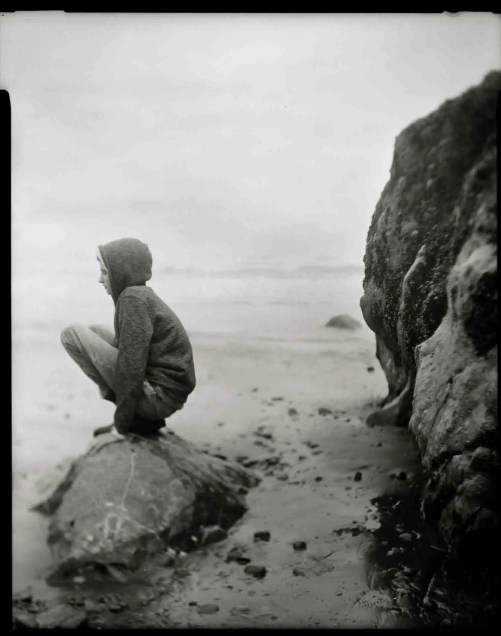
You said you jumped into photography because you like photographing your kids. Can you tell us more about your experience having your family as subjects? How do they react to it? What do they think of your work?
I have the best family for that! I’ve been into photography for so long that my kids are used to it. Sometimes I have to trade them something like, I’ll unload the dishwasher for you or you can have a little extra iPad time. It’s not that big of a deal to them. The rest of my family, the adults, took longer to feel comfortable, because adults generally care more about what they look like in a picture.
I really only shoot my family and friends and my family is really supportive. I’ll go on a hike with my extended family and people will take turns carrying my backpack of gear for me and my tripod. If I ask whether I can take a picture of someone, they’re always happy to participate. My mom in particular will do more elaborate posing for me.
So they’re pretty comfortable in front of your camera? Are they naturals?
I think they’re probably a little uncomfortable, it depends on the subject. I have to ask at the right time and sometimes if I can tell someone is tense then I won’t ask. I also try to make sure there is something going on, whether it’s an interaction between two people or an activity or something to hold or something to do. I think that makes it so people aren’t quite as focused. I don’t pose anybody very much. I focus on the light, but I’m not usually like telling people “put your hand here and make this facial expression.”
So there’s no posing even with your children?
I mean, I’ll set something up. There has to be more planning because it’s large format work. I set up the shot before I bring them in and I pre-focus. And then bring them in and I’ll just say “sit here” and then I just chat with them and then I’ll just say “hold still.” It’s a hybrid between posing and not posing. We talk and try different things. Sometimes it works, sometimes we try something else. It’s just whatever happened to be the most natural thing at the time.
How has motherhood changed and affected you as a photographer?
I wasn’t really a photographer before I was a mother so I don’t really have much to compare it to. I do know that I couldn’t have started as a photographer earlier than I did. My eldest child has autism, so for the first several years of his life I was working really hard with him in therapy. I just recently found a journal I had been keeping at the time and there were entries like “everything is great and he won’t stop crying and I don’t have a lot of time for creative pursuits.”
It’s hard to imagine having time for photography when I read that now. If you have a special needs child who is little, there isn’t room for that. Then he got older and we had another baby and then you have a baby. You’re not sleeping, you can’t come up with ideas. It’s overwhelming and all consuming. After a few more years I could start thinking about creative things. I became inspired by the idea of capturing all the moments of life. Not just the birthday candles, but also the tears and tantrums. I think that for me, capturing that experience, my experience as a mother became a source of inspiration.
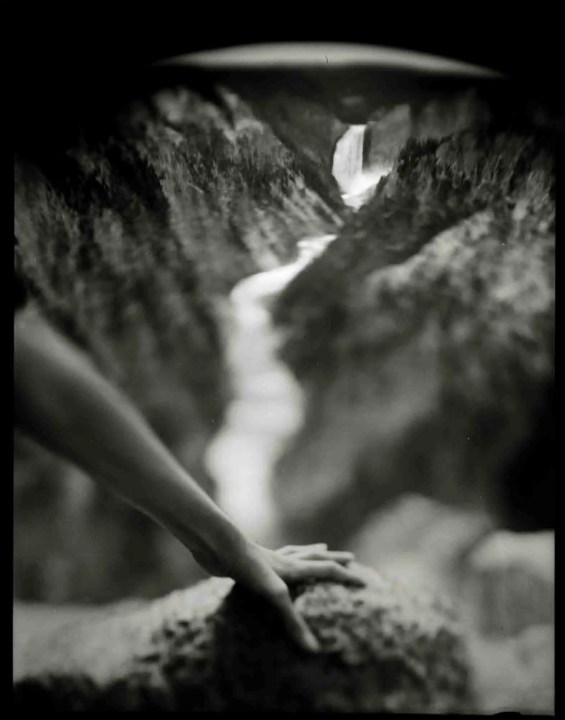
A lot of your photos are taken on black and white, often on Fomapan 100. Why black and white? Does that speak to you more than color?
In a practical sense it’s easier to develop. I can develop color but I’m not reliably good at it. But, even when I shot digital I converted most things to black and white. I feel like color steals the show. It becomes the thing. The only way I can really shoot color and be happy with it is if it’s minimal, simple and stripped down. I just see things that way. I just see things in terms of the tonality. It’s simpler. It makes you focus on shapes, emotion, and light.
What’s the biggest challenge and what advice would you give to someone just starting out in large format?
Hmm that’s really good. It might seem silly but the heft of everything is a real challenge!
I actually have a herniated disk because of carrying this stuff around. I get my kids to carry it as much as I can now. But it’s really heavy and everything is big and weighs a lot. And yeah you can get lightweight ones but I love my camera and I don’t want a different one.
A better answer might be that there are a lot of ways to mess up. You have to be okay with messing up and that takes some mental adjustment. If you’re coming from digital the difference will be more apparent. With large format, I have six chances to make my photo, not the 10, 12 or 36 chances of roll film or the infinite opportunities possible with digital cameras.
I would also say to do your best and try not to be intimidated. It’s not scary. It allows you to do so many things and express yourself in different ways. It’s up to you to explore this world of possibilities.
You mentioned Sally Mann, but are there any other female photographers that inspire you?
Gertrude Käsebier’s work at the turn of the century is really amazing and beautiful family photography done in large format. Also Anne Brigman, who did nudes in nature around the same time. More than 100 years ago women were making a major impact on the photographic community and people somehow forget that. Women have done some amazing work, even before people realize they were doing so.
What’s next for you when it comes to your photography?
I’d like to do more work with models. I recently had a lot of fun in a shoot with a friend who’s also a photographer. We shot the model together and it was interesting to see our different perspectives. I shot 46 sheets in four hours! I would shoot 6 sheets then he would take a turn and while he was shooting I would be switching my film. I would like to do more of that.
It’s important that I have something to say with my photography. A lot of people can create something beautiful, but I want to have something to say. I don’t know what that is yet so I need to figure that out.
Get Inspired
For more stories behind the images and photography from the community check out the many series we’ve published over the years below!
Featured Photophile – we shine a spotlight on amateur photographers whose work we love.
Photographer Interviews – in-depth discussions with professional and established photogs doing great work.
Female Photographers to Follow – get inspired by a monthly series focused on the beautiful and unique perspectives of female photographers.
Five Favorite Photos – a hand-selected examination of the oeuvre of ur favorite famous photographers.
Follow Casual Photophile on Facebook and Instagram
[Some of the links in this article will direct users to our affiliates at B&H Photo, Amazon, and eBay. By purchasing anything using these links, Casual Photophile may receive a small commission at no additional charge to you. This helps Casual Photophile produce the content we produce. Many thanks for your support.]
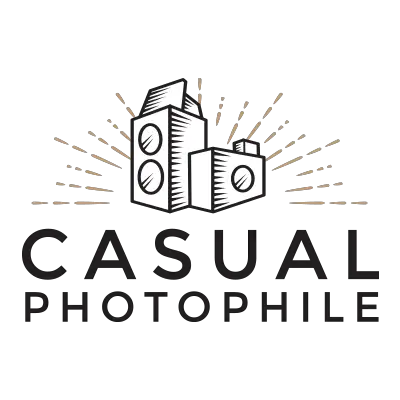
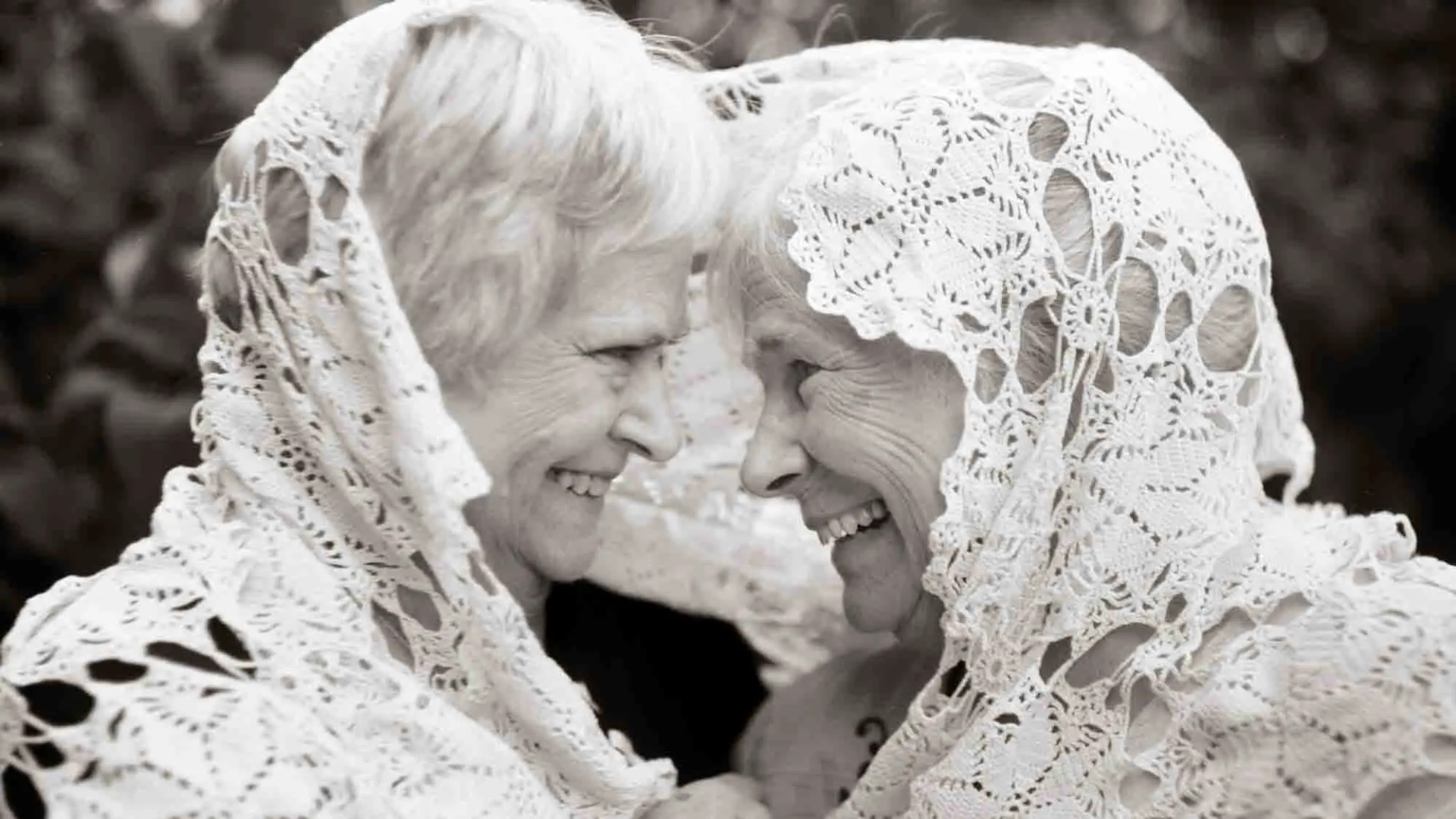
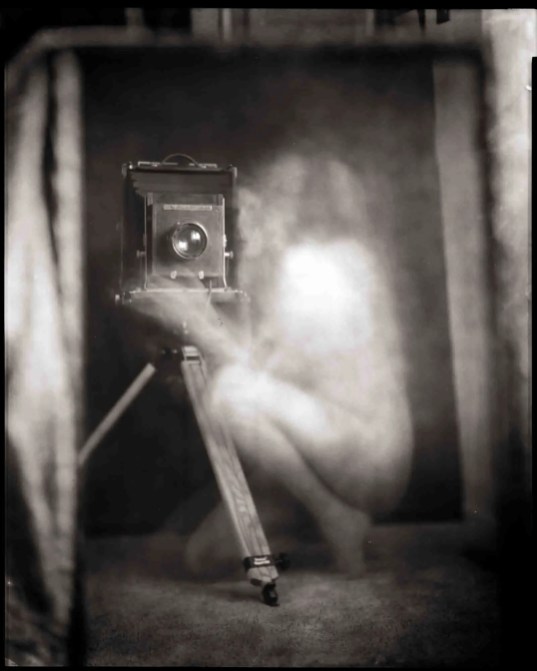
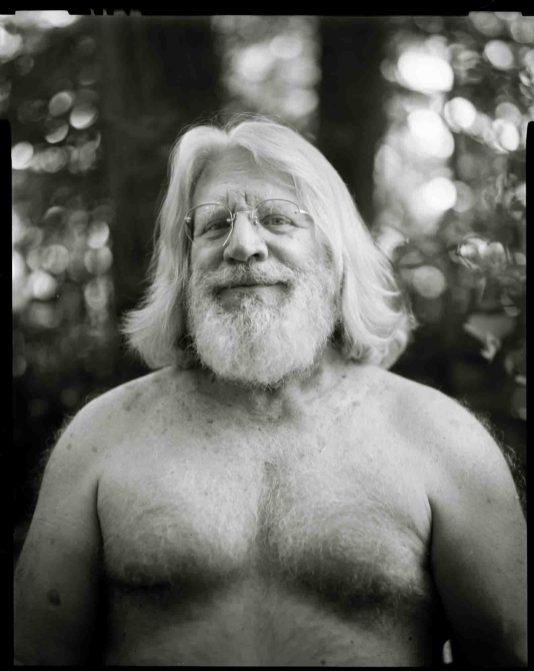

2 great articles this 29th October, this one and the Nikon Z9. The Z9 has many comments 😉
This one none.
I am happy for the Nikon, but the gear does not make the pictures, the photographer yes.
Look at the images here !!! Whaouuuu! Can you make that with the Nikon Z9 or the last Sony without passing many time on processing with softwares? Will you get the same? 😉
I start to comment here, because I focus on images not on gears, this is what I look, the result !!! Last time one image from Peter Tosh was very amazing with a Minolta instamatic, … that’s all,
Danielle often introduces great images to us, images which are magic. Look at well this one.
This is photography, and this is not about gear. Now I will have a look to the Z9 review, after this one, for me this one is more important, because after the Z9 it will have a Z10, after the Sony 7 R IV it will have the V, like the new Xperia Pro-I, every year!!!
Who can follow? All these gears cost several thousands $, …what about the climate change with all the ressources we steal from nature to make all these goods ! There is many old film cameras which work, … here the result !!! The head is not only to wear a cap !